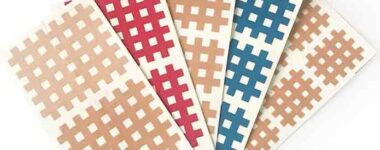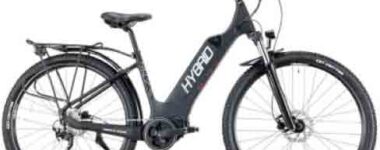Latest News
Share this post:
If you haven’t experienced chafing during a run or bike ride, consider yourself lucky. A little chafing may seem like a minor issue but it can be surprisingly painful and, if ignored, it can turn into an excruciating ailment that will hinder your comfort and performance.
What is Chafing?
Chafing is irritation to the skin caused by friction—usually skin-on-skin or clothing-on-skin. This friction will eventually cause enough irritation that it will injure your skin, resulting in a rash, blisters or raw skin. Severe chafing can be extremely painful, making movement difficult.
Chafing can happen with just about any activity that includes repetitive motion, but it is especially common during long-distance running and cycling. Some factors that may cause or contribute to chafing include:
-
-
-
- Ill-fitting clothing
- Fabrics that don’t wick moisture
- Hot weather
- Humidity
- Sweat
- Water from water sports
- Sensitive skin
- Large muscles
- Extra body weight
-
-
The first sign that chafing is occurring is a hot spot. Just like with blisters on your feet, early detection is important. As soon as you feel a hot spot somewhere, stop what you’re doing and check out the area. If the area is even a tad red and irritated, take the time to address the issue.
How to Prevent Chafing
You can prevent most chafing by applying lubrication and wearing properly fitting athletic clothing.
Apply lubrication: There are a number of skin-treatment products on the market that are designed specifically for lubricating high-friction areas on your body to prevent chafing. You can use the lubricant to pretreat known problem areas or address hot spots that develop mid-activity. Be sure to follow the directions, but in general, apply the product liberally to any area that rubs.
Say no to cotton: The old adage “cotton kills” applies here, too. Cotton is great for lounging and everyday wear, but as soon as you work up a sweat, it will take a long time to dry and can cause painful skin irritation when it rubs. Choose synthetic or wool fabrics instead.
Proper fit is key: A sports bra or briefs that are too tight can dig into skin. Baggy shorts and shirts can rub skin raw. Make sure your clothes are neither too tight nor too loose.
Go seamless and tagless: Even properly fitting clothes can cause chafing when seams and/or tags rub against your skin. Choose clothing that has very few seams and, if possible, zero tags. Often the only way to figure out if a seam will cause chafing is to wear the clothing item, but it’s worth paying attention to rubbing or irritation when you’re trying on shorts or a shirt in store. If something bugs you in the store, then it definitely will during a long run or hard workout.
Evaluate Your Underwear: For runners, shorts with built-in briefs can be a blessing or a curse. Some runners find them to be just what they need to prevent chafing, while others prefer shorts without built-in briefs so they can choose separate underwear or compression shorts. Men typically need the support of underwear, but some women prefer to forgo it when running or working out in formfitting tights. Cyclists, male and female, generally do not wear underwear underneath cycling shorts with a built-in chamois. In general, figuring out what undergarments work for you is usually a matter of trial and error.
Secure your pack: The bouncing and shifting of a running pack, vest or waistbelt can cause chafing in a number of places, including your waist, back and shoulders. Make sure you snug the straps on your pack to limit the amount of movement while you’re running.
Hydrate: As you become dehydrated, the concentration of salt in your sweat becomes greater. Salt irritates the skin and can lead to friction that causes chafing. Stay properly hydrated and you can help prevent chafing.
Where Chafing Occurs and Prevention Tips
Here are the most likely places you’ll experience chafing and ways to prevent it
Thighs
Skin-on-skin rubbing or clothing rubbing against skin is common in the thigh area.
Prevention: To prevent chafing, apply a skin lubricant liberally to your inner thighs before running. Your clothing can also be the culprit. Avoid running in shorts or pants that have seams on the inner thigh. Choose snug-fitting stretchy athletic clothing rather than baggy shorts or pants. Some runners find that compression shorts take care of the problem.
Groin
As with thigh chafing, chafing in the sensitive groin region is generally caused by skin rubbing against skin, but clothing can be a factor, too.
Prevention: Liberally applying a skin lubricant at the start of your run, workout or bike ride is key. If you suspect clothing is the cause, examine seams and fit. Applying lubricant where the seam touches skin can help, but you may need to try different shorts or pants. For running and working out, try wearing stretchy clothes that fit snug, but not too tight. For cycling, try bike shorts with a built-in chamois that will wick moisture away from your body. Applying skin lubricant, such as a chamois cream, to your skin or directly on the chamois can reduce rubbing.
Nipples
A common place for men to experience chafing is on their nipples. For women, a properly fitting sports bra usually provides protection from this (however, a sports bra can cause chafing elsewhere.) Nipple chafing is caused by repeated rubbing of your skin against a shirt. In severe cases, nipple chafing can draw blood. With less-severe chafing, you’ll experience significant pain when sweat contacts the irritated skin or when you suds up in the shower after a workout.
Prevention: Apply a skin lubricant liberally to your nipples before running. Another common technique is to place bandages over your nipples. There are bandages designed specifically for covering and protecting nipples or you can try a standard bandage, like the type you’d use on a cut on your finger.
Sports Bra
A sports bra that doesn’t fit properly or has poorly placed seams can cause chafing.
Prevention: The best thing you can do is wear a properly fitting sports bra.
Armpits
Skin-to-skin rubbing or abrasion from a shirt are two causes of armpit chafing. If you shave your armpits, you may be prone to chafing caused by a shirt rubbing against hair stubble.
Prevention: Apply skin lubricant to your armpits and make sure you wear a shirt that fits you properly. If you’ve experienced chafing by your armpits, look at the shirt you’re wearing and see if a seam is causing the problem. If so, try a shirt with a different construction.
Heart Rate Monitor Strap
Sometimes a heart rate monitor strap can cause chafing around your chest and back.
Prevention: The easiest fix is to apply skin lubricant to the strap itself. This won’t damage the strap; They’re designed to resist moisture from sweat and rain, so a little lube won’t be a problem.
How to Deal with Chafing
If our prevention tips arrived too late and you’re currently dealing with badly chafed skin, here’s some treatment advice:
Reduce the rubbing: If chafing develops mid-activity, find a way to reduce the rubbing. Drying the problem area and applying a skin-treatment lubricant and/or changing your clothes can help.
Take a shower: When you get home, wash up as soon as you can after your activity to get rid of salt residue left on your skin from sweating. (When water hits the chafed spot, it’s probably going to sting). Use lukewarm water (hot water will be too painful) and soap to gently clean the area. Pat the area dry.
Ease the discomfort: Treat chafing like you would a minor burn or diaper rash. To prevent further rubbing, try loosely covering the area with nonstick gauze.
Take a break: To give the injured area time to heal you may need to take a few days off from the activity that caused the chafing.
See a doctor: For severe chafing that’s extremely painful, swollen and/or bloody, check in with your doctor.


 Collecting and Propagating Seeds
Collecting and Propagating Seeds China on a Plate: The Flavours of a Nation (with a Spotlight on Sichuan)
China on a Plate: The Flavours of a Nation (with a Spotlight on Sichuan) Kinesiology Cross Patches
Kinesiology Cross Patches Camaraderie On a Walking Tour…
Camaraderie On a Walking Tour… How E-Biking Has Transformed Biking Tours
How E-Biking Has Transformed Biking Tours








